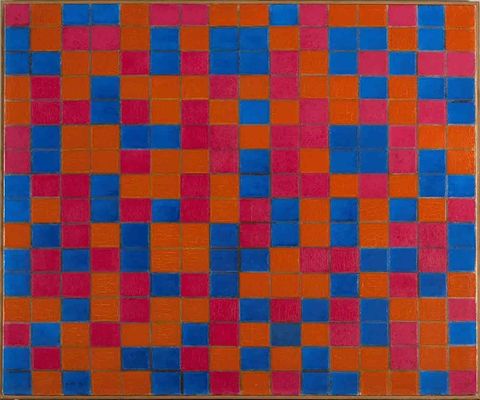Thinking inside the lines: creating a simple masterpiece
February 26, 2020
It’s a myth that beautiful art has to be complicated or complex. You don’t need to spend weeks or months on a piece for it to be a masterpiece. In fact, some of the most creative and amazing pieces of art ever created were simple. They did not use innovative or out-of-the-ordinary techniques, but followed the rules of art and were simply beautiful. They evoke thoughts and feelings that go beyond the canvas and draw the attention and eyes of the viewer. All the following paintings are more than the sum of their parts and do not rely on complexity or innovation to make them unique and beloved.
The Mona Lisa
Widely considered the most famous and beloved painting of all time, this painting is incredibly simple, yet a complete masterpiece. It depicts a woman sitting and smiling softly. It was painted by Leonardo Da Vinci in the early 1500s. It is not done in a wildly experimental style and doesn’t tell a complex story.

Girl With a Pearl Earring
This painting by Johannes Vermeer is similar to the Mona Lisa in that it is a simply painted portrait of a young woman. At first glance there is little extraordinary about it. But it is hard to deny it’s a masterpiece. The colours and command of shadow and texture are masterful and only enhance the beauty of the subject.
American Gothic
This iconic piece of American art shows a farmer and his daughter standing in front of their home. It is a simple painting, many people even think it’s dull. However, it is a masterpiece as it plainly and calmly symbolizes The Great Depression in America in the early 1900s.
Royal Red and Blue
This painting by Mark Rothko is simply made up of red and blue squares painted on a canvas. It is abstract art that seems painfully simple at first, with no apparent subject or meaning but this abstract expressionist painting sold for over $75 million in 2012. It is absolute proof that a masterpiece can be simple.
Composition With Grid 8
This painting by Piet Mondrian follows in line with most of his work. He often paints with geometric shapes, neatly tessellated or aligned, and bright blocks of solid colour. His paintings are definition of “painting inside the lines” as they maintain rigid order throughout. Despite, or maybe because of this rigidity, his paintings are some of the most loved contemporary abstract art in the world.
Articles

In the period since COVID forced many of us back home and out of the office, remote work has become the new norm for many. The flexibility of working from home, especially for those with small children, is very compelling, but making a productive workspace is more than setting up a desk in the spare room. More people are seeking to create functional and comfortable workspaces in their homes, however, it can be difficult to strike the right balance between a professional office space and a cosy home environment. Here are some tips for designing a home workspace that meets both of these needs: Dedicate a specific area for work Designating a specific area for work is essential for separating work from leisure time. This could be a separate room or just a corner of a room. It is important to make sure that the workspace is free from distractions and clutter, as this will help you stay focused and productive. Choose the right furniture Ergonomic furniture is key to a comfortable and productive workspace. Invest in a comfortable chair, a desk that is the right height, and a good-quality mouse and keyboard. If you are prone to back pain, consider a standing desk. Add personal touches Just because your workspace should be functional, doesn’t mean it can’t be personal. Add photos, plants, and other personal items to make the space feel like your own. This will help create a sense of comfort and make you feel at home in your workspace. Good lighting Good lighting is essential for a comfortable workspace. If possible, place your desk near a window for natural light. If not, invest in a high-quality desk lamp to provide bright, even light. Keep it organised An organised workspace will help you stay productive and focused. Use desk organisers, filing cabinets, and other tools to keep your work area free from clutter. A clean and organised workspace will also help you start each day with a clear mind. Consider your work style Think about the type of work you do and how you like to work. If you prefer a minimalist workspace, opt for a simple desk and a few basic supplies. If you need space for multiple screens and other technology, make sure you have enough room to work comfortably. Take breaks It’s important to take breaks throughout the day to avoid burnout. Step away from your desk, go for a walk, or do some stretching exercises to clear your mind and recharge.













